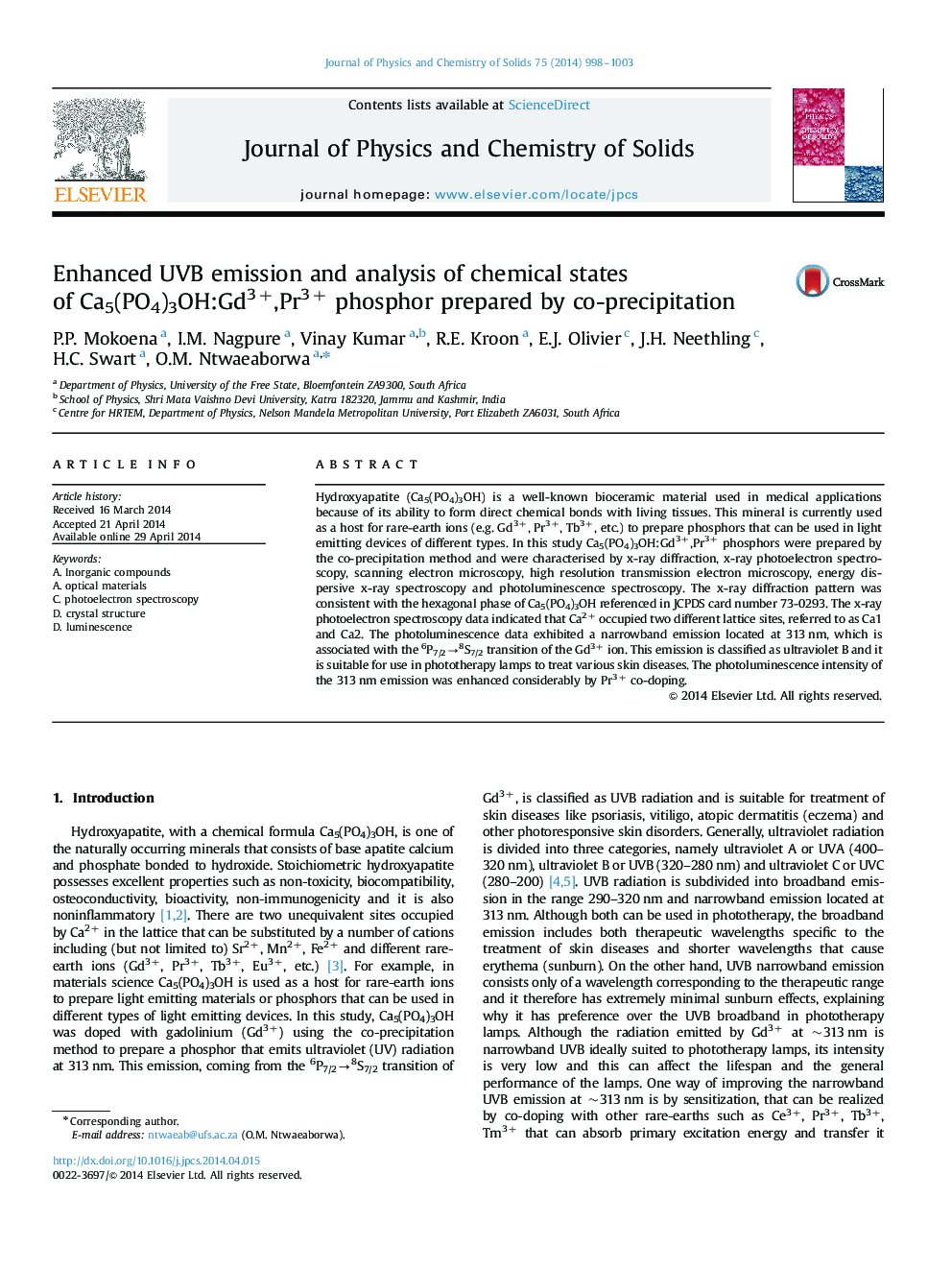| Article ID | Journal | Published Year | Pages | File Type |
|---|---|---|---|---|
| 1515743 | Journal of Physics and Chemistry of Solids | 2014 | 6 Pages |
Abstract
Hydroxyapatite (Ca5(PO4)3OH) is a well-known bioceramic material used in medical applications because of its ability to form direct chemical bonds with living tissues. This mineral is currently used as a host for rare-earth ions (e.g. Gd3+, Pr3+, Tb3+, etc.) to prepare phosphors that can be used in light emitting devices of different types. In this study Ca5(PO4)3OH:Gd3+,Pr3+ phosphors were prepared by the co-precipitation method and were characterised by x-ray diffraction, x-ray photoelectron spectroscopy, scanning electron microscopy, high resolution transmission electron microscopy, energy dispersive x-ray spectroscopy and photoluminescence spectroscopy. The x-ray diffraction pattern was consistent with the hexagonal phase of Ca5(PO4)3OH referenced in JCPDS card number 73-0293. The x-ray photoelectron spectroscopy data indicated that Ca2+ occupied two different lattice sites, referred to as Ca1 and Ca2. The photoluminescence data exhibited a narrowband emission located at 313Â nm, which is associated with the 6P7/2â8S7/2 transition of the Gd3+ ion. This emission is classified as ultraviolet B and it is suitable for use in phototherapy lamps to treat various skin diseases. The photoluminescence intensity of the 313Â nm emission was enhanced considerably by Pr3+ co-doping.
Keywords
Related Topics
Physical Sciences and Engineering
Materials Science
Electronic, Optical and Magnetic Materials
Authors
P.P. Mokoena, I.M. Nagpure, Vinay Kumar, R.E. Kroon, E.J. Olivier, J.H. Neethling, H.C. Swart, O.M. Ntwaeaborwa,
